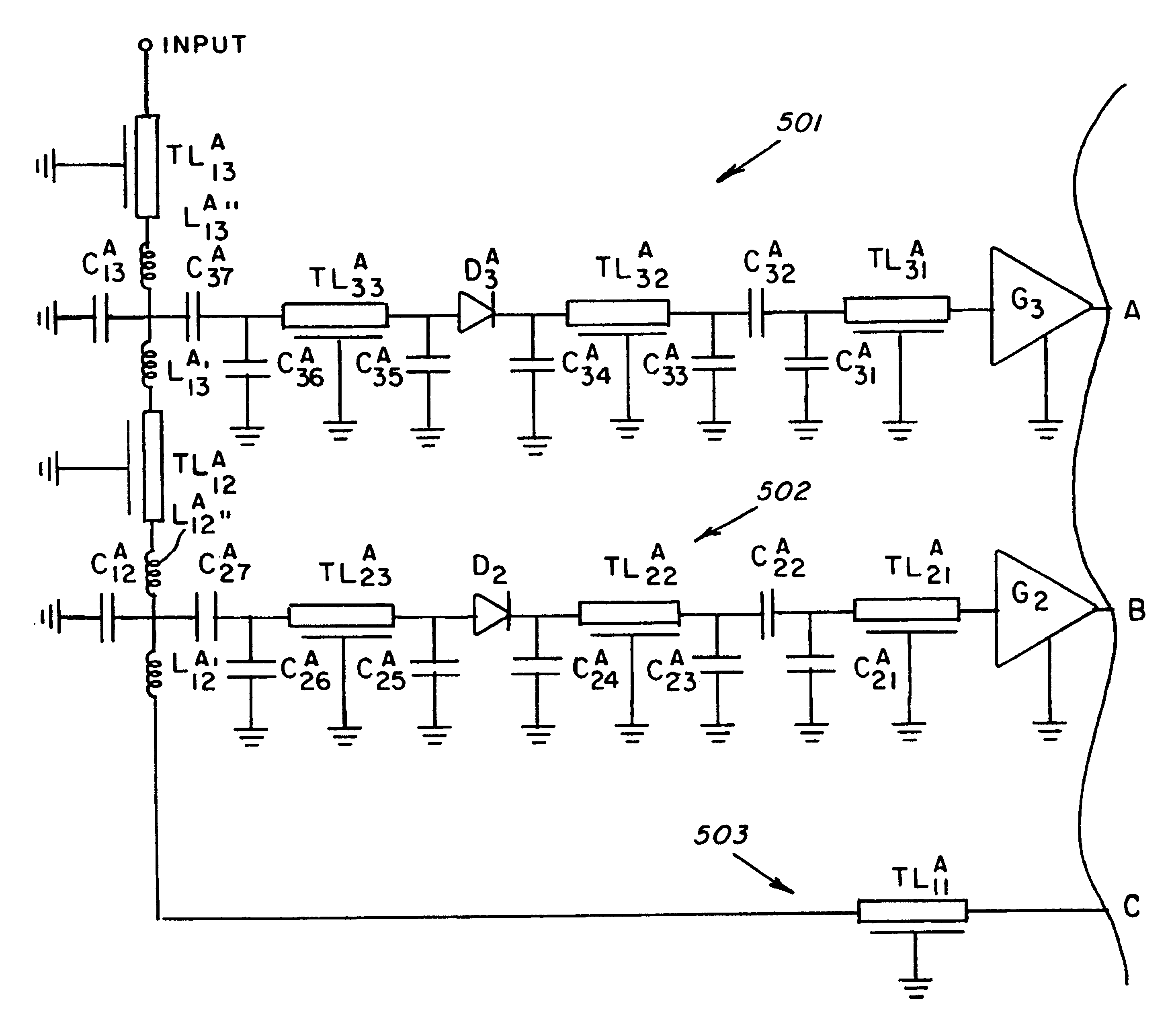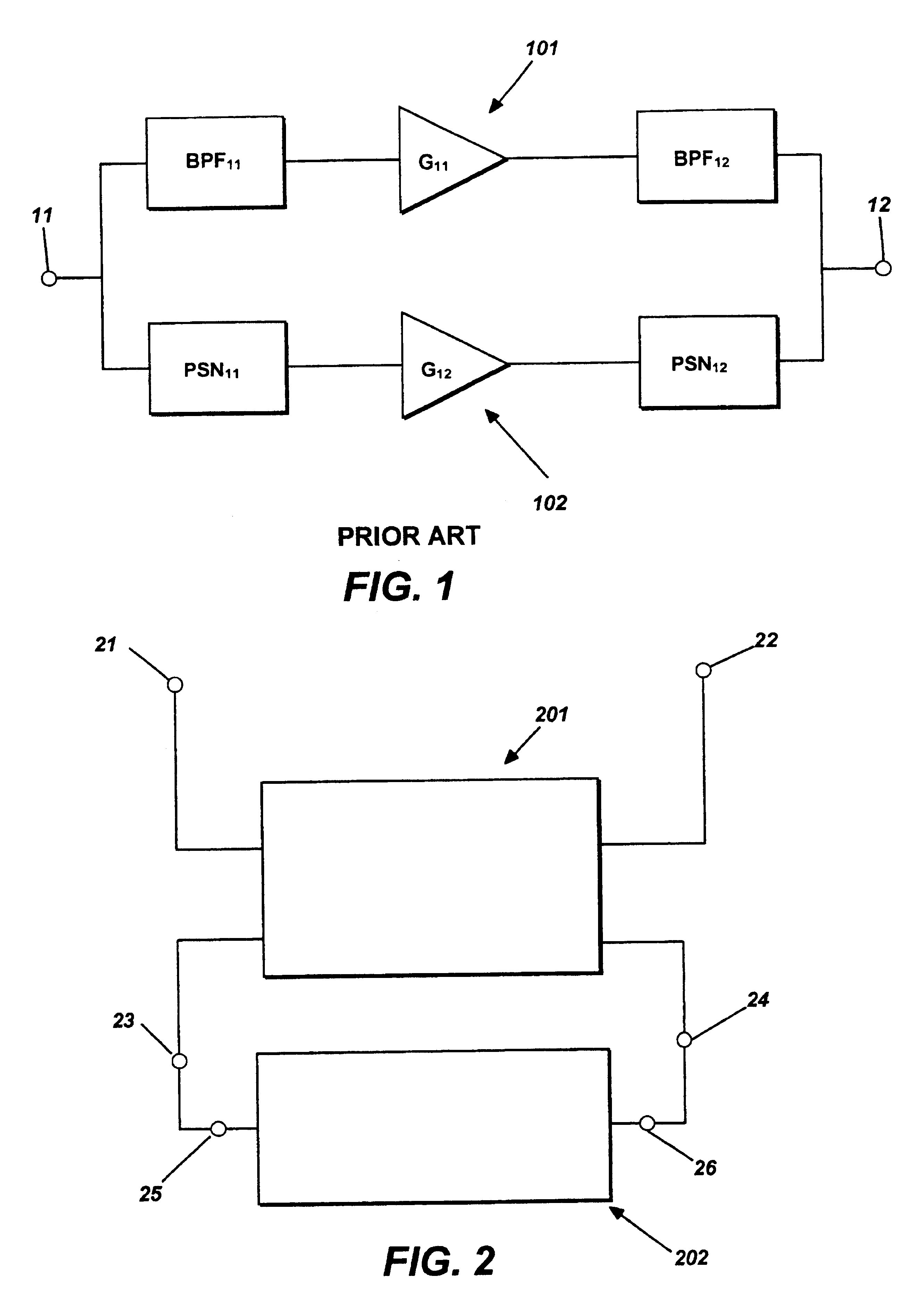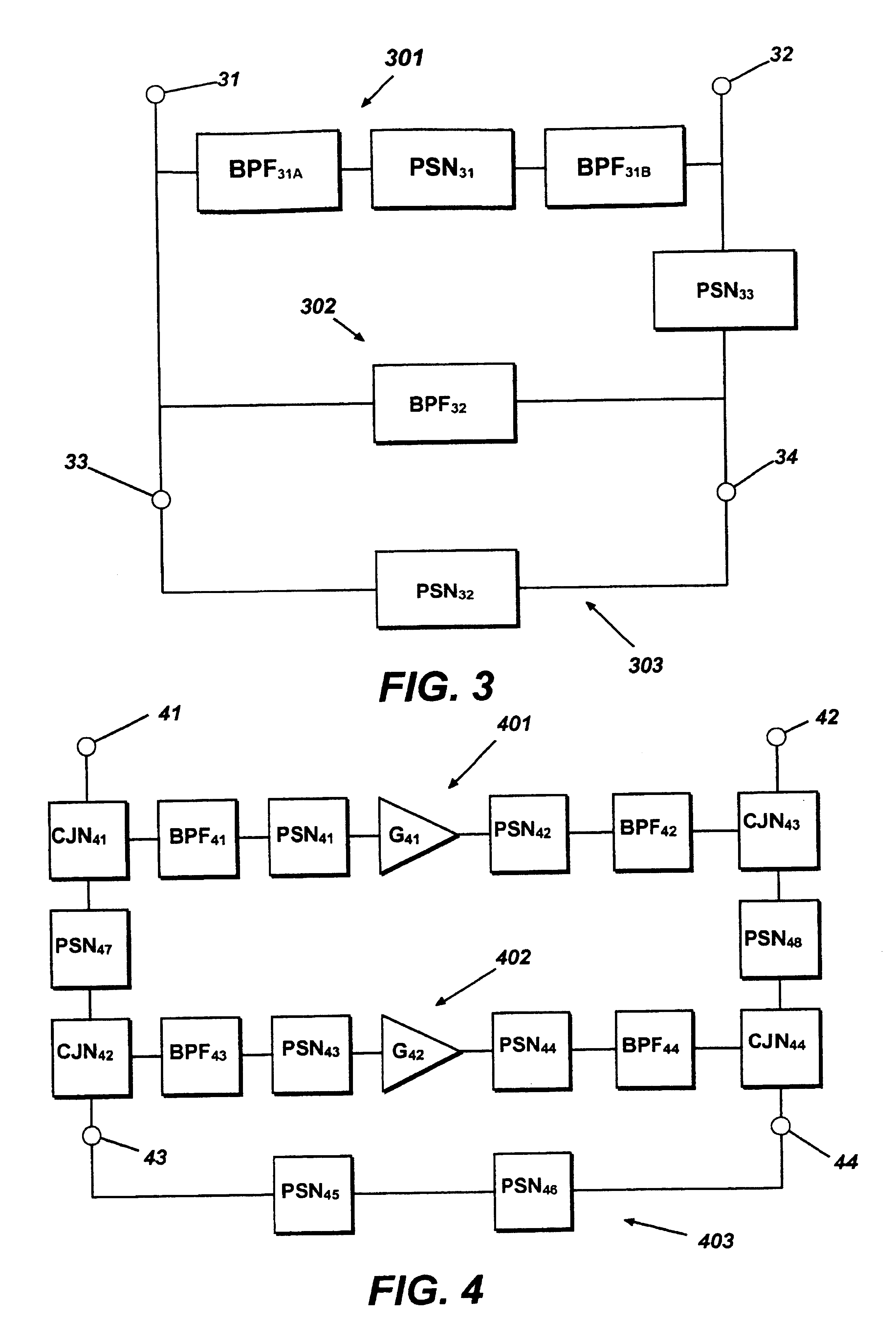Frequency-tunable notch filter
a notch filter and frequency-tunable technology, applied in the field of active notch filters, can solve the problems of signal-level dependence of transfer characteristics, spurious responses, and degradation of receiver performance,
Inactive Publication Date: 2003-10-21
THE UNITED STATES OF AMERICA AS REPRESENTED BY THE SECRETARY OF THE NAVY
View PDF29 Cites 18 Cited by
- Summary
- Abstract
- Description
- Claims
- Application Information
AI Technical Summary
Problems solved by technology
In modern broadband system applications, where receivers are especially vulnerable to signal interference, care must be taken to suppress incidental, unwanted signals that can degrade receiver performance through the generation of nonlinearity-induced spurious signals.
A conventional broadband power limiter, often implemented with semiconductor p-i-n diodes, can provide effective protection against receiver front-end burnout, but will cause spurious responses of its own, due to the nonlinear action of the limiting process.
Although active filters have the ability to provide good frequency selectivity, as well as reduce circuit size, weight, and cost, which are the critical requirements in modern, multifunction, wide-bandwidth system applications, they can be at a disadvantage when it comes to noise, susceptibility to signal distortion, and signal-level dependence of transfer characteristics.
Among the particular disadvantages of this approach are high noise levels, and the potential for parasitic oscillations, should the active element gain change with temperature or age.
Active notch filters, in the past, have exhibited very high noise figures and high signal distortion levels, even at passband frequencies where no filtering action takes place.
This is due to the presence of impedance matching networks in the main signal path that introduce noise, and the presence of active circuit elements in the form of transistors and amplifiers that contribute both noise and signal distortion.
With the composite notch filter's passband response determined primarily by the characteristics of the bypass channel, any amplifier used therein is apt to be a prominent source of passband noise and distortion.
In the bypass channel of a two-branch channelized notch filter, the use of a unilateral gain block or amplifier is unavoidable, due to stability and other considerations.
Active notch filters, in the past, have exhibited very high noise figures and high signal distortion levels, even at passband frequencies where no filtering action takes place.
This is due to the presence of impedance matching networks in the main signal path that introduce noise, and the presence of active circuit elements in the form of transistors and amplifiers that contribute both noise and signal distortion.
Method used
the structure of the environmentally friendly knitted fabric provided by the present invention; figure 2 Flow chart of the yarn wrapping machine for environmentally friendly knitted fabrics and storage devices; image 3 Is the parameter map of the yarn covering machine
View moreImage
Smart Image Click on the blue labels to locate them in the text.
Smart ImageViewing Examples
Examples
Experimental program
Comparison scheme
Effect test
Embodiment Construction
and examples are not intended to limit the scope of the invention in any way. The scope of the invention is to be determined from the claims appended hereto.
the structure of the environmentally friendly knitted fabric provided by the present invention; figure 2 Flow chart of the yarn wrapping machine for environmentally friendly knitted fabrics and storage devices; image 3 Is the parameter map of the yarn covering machine
Login to View More PUM
 Login to View More
Login to View More Abstract
A new type of frequency-tunable active notch filter achieves frequency selectivity through interaction among input derived signal components that are passed through parallel signal channels in a forward-only direction. The notch filter differs from earlier channelized notch filters by using multiple, instead of just one, bandpass channels that maintain required forward signal flow in the main, passband-determining signal path without signal distortion at passband frequencies. The new approach has been experimentally verified with a hybrid-integrated three-channel filter whose 40-dB-deep band-reject notch can be continuously tuned, with the help of voltage-controlled variable-capacitance elements, from 9.5 to 10.5 GHz. A single-pole bandpass filter tunes in frequency with the help of only one variable capacitance element, yet still maintains constant passband width across the tuning span. One feature of the bandpass filter is the achievement of constant notch bandwidth across the entire frequency-tuning span of the notch filter.
Description
1. Field of the InventionThe present invention relates to the field of active notch filters. More particularly, the present invention relates to a channelized frequency-tunable active notch filter with a low-distortion passband response.2. Description of the Prior ArtIn modern broadband system applications, where receivers are especially vulnerable to signal interference, care must be taken to suppress incidental, unwanted signals that can degrade receiver performance through the generation of nonlinearity-induced spurious signals. A conventional broadband power limiter, often implemented with semiconductor p-i-n diodes, can provide effective protection against receiver front-end burnout, but will cause spurious responses of its own, due to the nonlinear action of the limiting process. An alternative is to place a notch band-reject filter in front of a receiver's low-noise amplifier to notch out potential interference, with frequency-tunability added to permit adaptation to changing...
Claims
the structure of the environmentally friendly knitted fabric provided by the present invention; figure 2 Flow chart of the yarn wrapping machine for environmentally friendly knitted fabrics and storage devices; image 3 Is the parameter map of the yarn covering machine
Login to View More Application Information
Patent Timeline
 Login to View More
Login to View More Patent Type & Authority Patents(United States)
IPC IPC(8): H03H7/01H03H1/00H03H1/02
CPCH03H7/0123H03H2210/015H03H2210/021H03H2007/013H03H1/02
Inventor RAUSCHER, CHRISTEN
Owner THE UNITED STATES OF AMERICA AS REPRESENTED BY THE SECRETARY OF THE NAVY
Features
- R&D
- Intellectual Property
- Life Sciences
- Materials
- Tech Scout
Why Patsnap Eureka
- Unparalleled Data Quality
- Higher Quality Content
- 60% Fewer Hallucinations
Social media
Patsnap Eureka Blog
Learn More Browse by: Latest US Patents, China's latest patents, Technical Efficacy Thesaurus, Application Domain, Technology Topic, Popular Technical Reports.
© 2025 PatSnap. All rights reserved.Legal|Privacy policy|Modern Slavery Act Transparency Statement|Sitemap|About US| Contact US: help@patsnap.com



